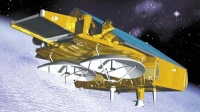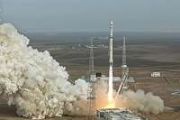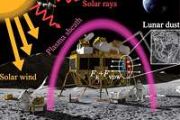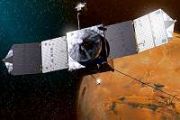CryoSat-1, also known as just CryoSat, was a European Space Agency satellite which was lost in a launch failure in 2005. It was to have been operated as part of the CryoSat programme to study the Earth's polar ice caps.
The CryoSat spacecraft was intended to operate in low Earth orbit for three years. It had a mass of 750 kilograms (1,700 lb) Its primary instrument, SIRAL, was to have used radar to determine and monitor the spacecraft's altitude in order to measure the elevation of the ice, and for radar imaging of the ice caps. A second instrument, DORIS, was to have been used to calculate precisely the spacecraft's orbit. It also carried an array of retroreflectors which would have allowed measurements to be made from the ground to verify the orbital data provided by DORIS.
CryoSat was launched from Site 133/3 at the Plesetsk Cosmodrome at 15:02:00 UTC on 8 October 2005. The launch was conducted by Eurockot, using a Rokot carrier rocket with a Briz-KM upper stage. The command to shut down the rocket's second stage engine was missing from the flight control system, and consequently the stage burned to depletion. This prevented the second stage from separating from the Briz-KM, and as a result the rocket was unable to achieve orbit. It reentered over the Arctic Ocean, north of Greenland. A replacement satellite, CryoSat-2, was successfully launched in 2010.






































































